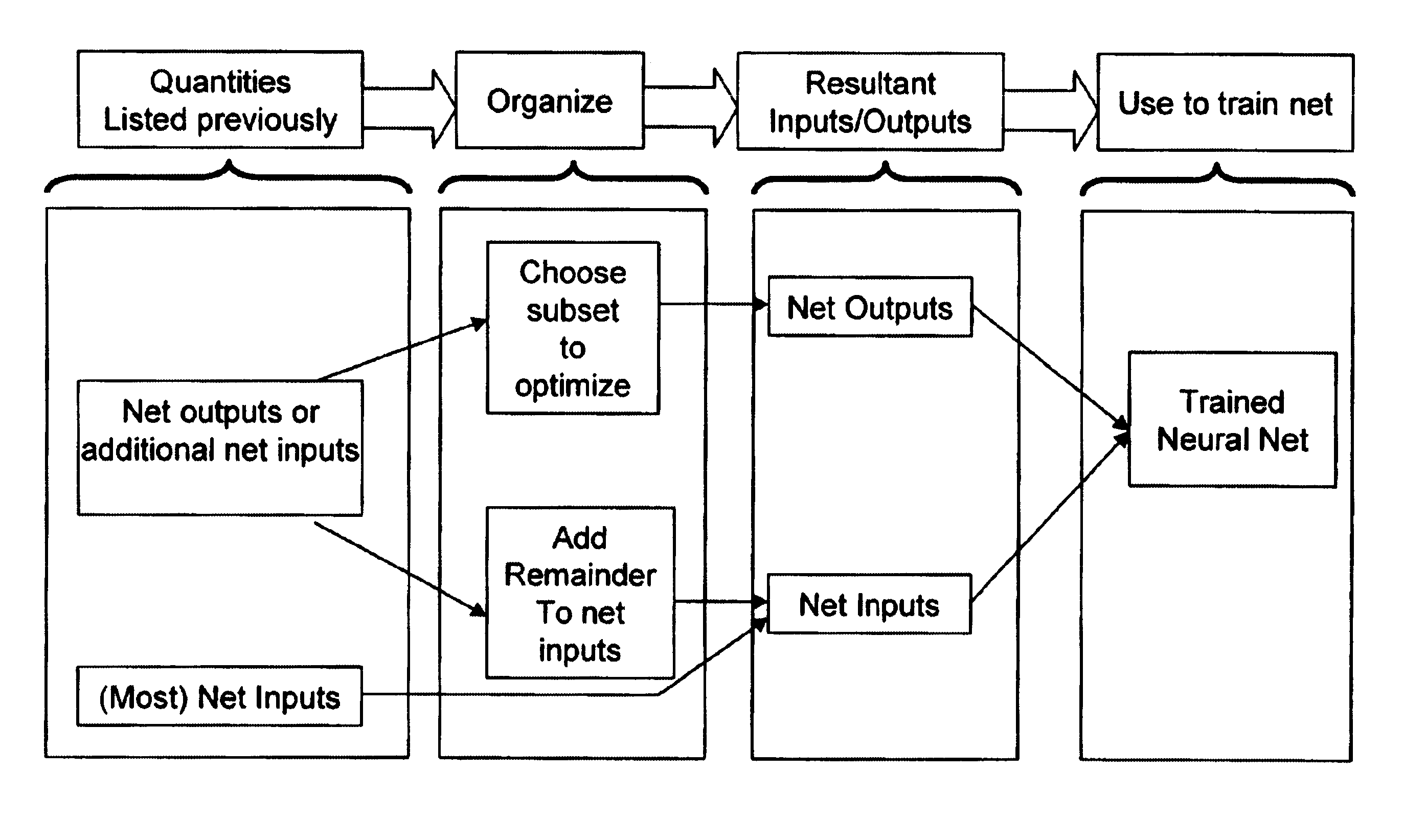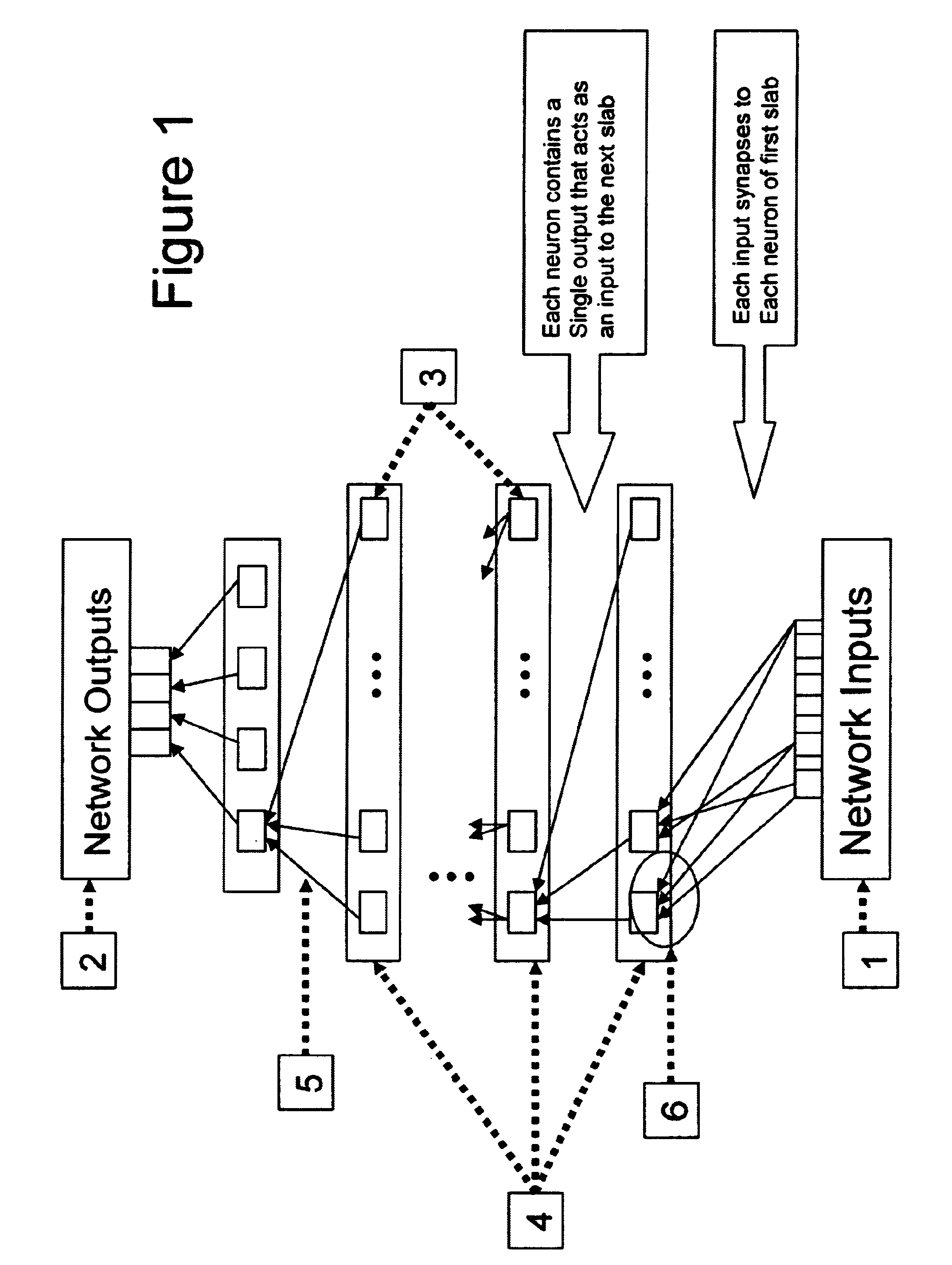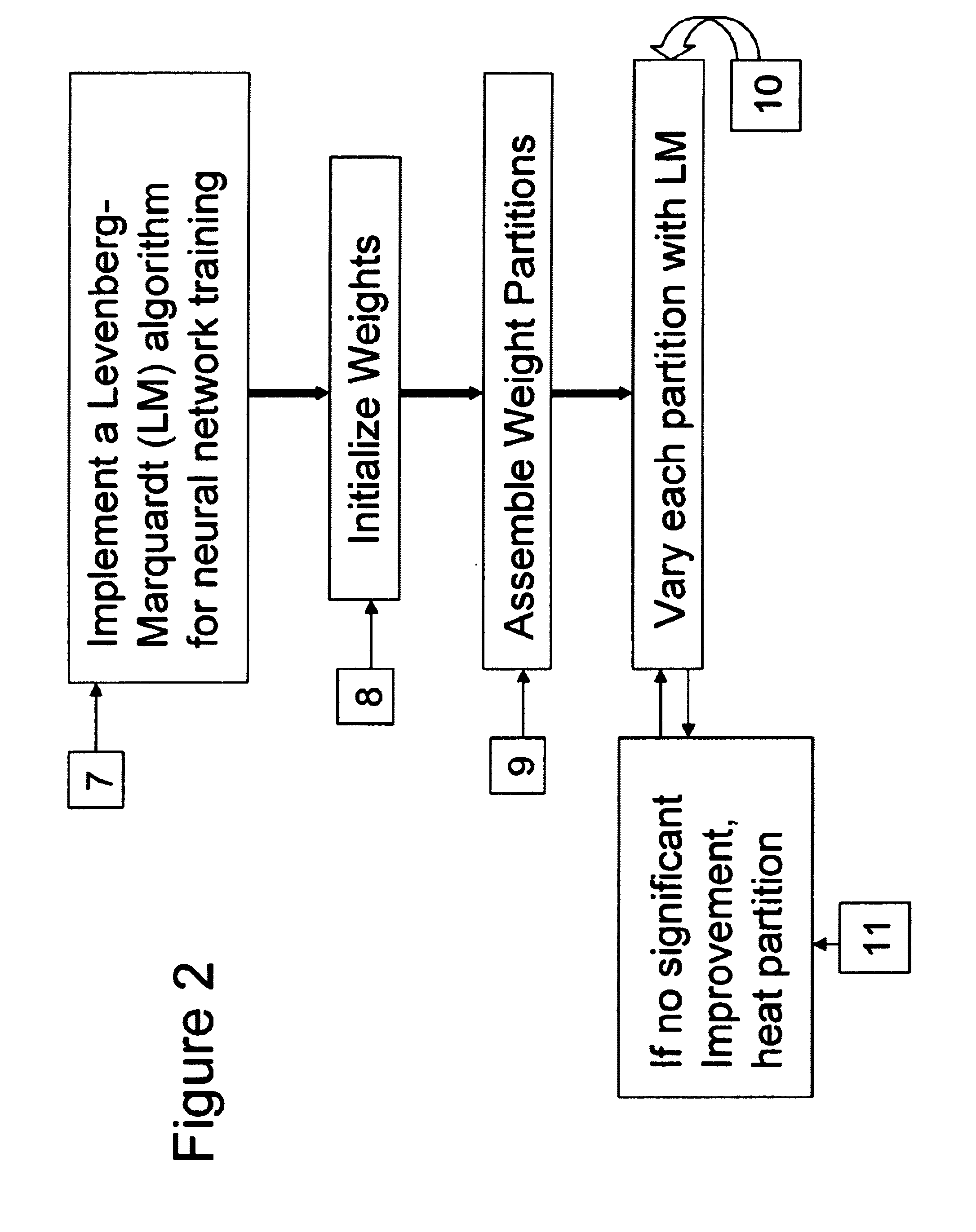To accomplish these goals, drug developers utilize
time consuming and scientifically advanced methods.
These expensive efforts yield an extremely high cost for many drugs.
Unfortunately, when these costly drugs are distributed they are usually accompanied by only a crude
system for assisting a doctor in determining an appropriate drug dosage for a patient.
This method suffers from a variety of deleterious consequences.
During the period that it takes for
trial and error to find an optimal drug dosage for a given patient, the patient may suffer from unnecessarily high levels of side effects or low or totally ineffective levels of relief.
Furthermore, the process wastes drugs, because it either prescribes a greater amount of drug than is needed or prescribes such a small amount of drug that it does not produce the desired effect.
The
trial and error method also unduly increases the amount of time that the patient and doctor must consult.
The compensation process can be quite lengthy while drug consumers experiment with varying dosages.
However, a practical solution to tailoring drug regimens has yet to be implemented on a widespread basis.
Although these methods have met with some success in research, there are several major drawbacks to their implementation.
The necessity for constant
blood draws for each patient being monitored hinders their practicality in the clinical setting.
Furthermore, the limitations of the algorithms used allow modeling of no more than a few select characteristics at a time, thus ignoring all others.
However, few, if any, prior art references consider the influence of ethnicity.
However, most current models used in research are dated and not as efficient as those yet to be publicized such as the preferred Levenberg-Marquardt technique used in the present invention, and explained in detail below.
Equivalently to the often existing uncertainties regarding the effects to be expected from changing the dosage of a drug, it is often difficult to answer for an individual patient questions such as "How little to I have to eat for how long to lose 50 pounds?" or "How much weight must I lose to lower my
blood pressure into a safe range?"
Such neural networks as have heretofore been employed in the health sciences have not been optimized at all to the best knowledge of the inventors, and certainly not by use of a fast
genetic algorithm.
It is also possible that this physician is not rendering "state to the art" patient service in this medical area.
Although the LM
algorithm was designed to be used for functions with many free parameters, it is not a practical method for optimizing functions with as many free parameters as a moderately sized mapping neural net.
This already far exceeds any PC's RAM capacity.
We believe required
processing time and memory render the LM algorithm incapable of practical use in training large nets.
The improvement associated with pLM comes with a cost.
Since some arbitrary pairs of weights never get varied together, the pLM can never achieve the level of optimization attained by use of the full LM.
If varying the weights in a given partition fails to improve the net error significantly, a small
Gaussian random deviate is added to those weights, the net error is remeasured.
Practical models will perform worse than this, with larger chi squared values.
For instance, the category "ethnicity" does not have a ready scale.
This is an industry-standard object-oriented language with limited
text processing tools and no portable windowing capabilities.
The problem with this alternate technique is that it assumed clinicians have already experimentally determined optimal
drug dosages for a series of individual patients.
As a general rule, global techniques are less well studied than local techniques.
However, it is somewhat more difficult, and uncertain, to architect the neural network, or a number of competing neural networks, in the first place.
The
disadvantage is that this observationally-based
predictive power is accompanied by a disregard for the identification of mechanisms underlying the predictions.
As research with neural nets begins to extend to various branches of
medicine, the types of neural network models being used in
medicine are slowly becoming more complex.
However, most current models used in research are dated and not as efficient or sophisticated as those yet to be publicized such as the Levenberg-Marquardt technique that is preferred for use in the present invention, and which is explained in detail below (see Background of Neural Networks, next).
The exact fitting function used is complicated by the fact that it incorporates many free parameters,
multiple applications of a simple nonlinear function, and multiple linear combinations of intermediate quantities.
Although these
network architecture diagrams are a hallmark of mapping neural nets, they do not illuminate the utility of these computational structures.
Traditional neural net training algorithms accomplish this in a slow, inefficient manner by taking single steps downhill in
error surface.
These techniques have the
disadvantage that the computations are no longer local and are therefore much more difficult to implement and academically less interesting.
These methods have not yet been extensively developed and are not generally available outside of research contexts.
Furthermore, these newest methods are still (circa 1999) an active area of research and unstandardized: there is an art to choosing the specific form of the algorithms to use, and a neural net specialist is required.
They add a small amount of thermal (random)
noise to the net's weights, and keep the changes if net performance improves.
While in
evolutionary computation the goal almost always is the optimization of some kind of fixed problem, this does not necessarily seem to be the case for biological evolutionary systems.
According to the literature, an intrinsic limitation of the use of neural nets is that they cannot be used to identify causal mechanisms underlying the predictions.
Due to technical difficulties, the Levenberg-Marquardt algorithm is often only implemented for up to three-slab networks.
The problem that the inventors faced was that their rate-determining step consisted of the solution of a matrix equation contained in the standard LM algorithm.
This is an industry-standard, object-oriented language with limited
text processing tools and no portable windowing capabilities.
Due to the variety of variables considered, the training
data set cannot contain examples of all possible combinations of inputs.
As previously described, it is generally believed that one cannot perform
hypothesis testing with neural nets.
A potential difficulty with our technique is that it is only useful to the clinician and is not relevant to researchers.
Although mapping neural net routines are already publicly available, support for
global optimization is rare (as it is the state of the art), and simultaneous support for either incomplete data sets or for a
genetic algorithm is not available.
While in
evolutionary computation the goal almost always is the optimization of some kind of fixed problem, this does not necessarily seem to be the case for biological evolutionary systems.
 Login to View More
Login to View More 


